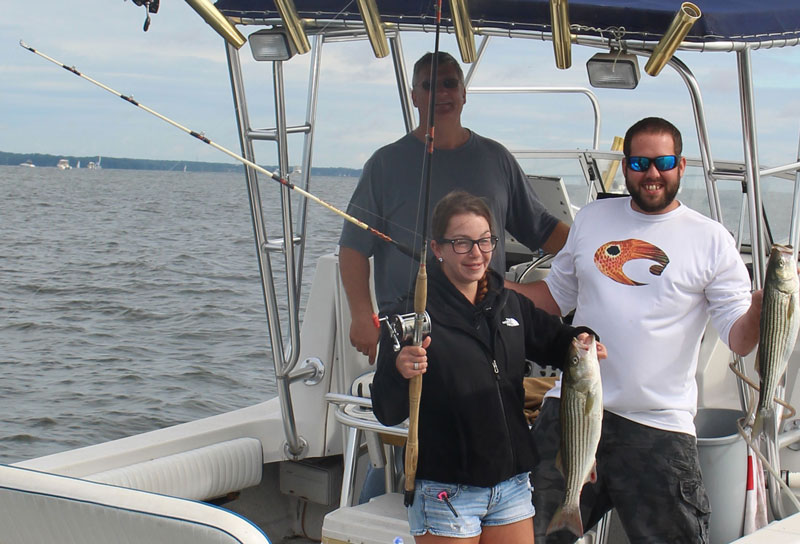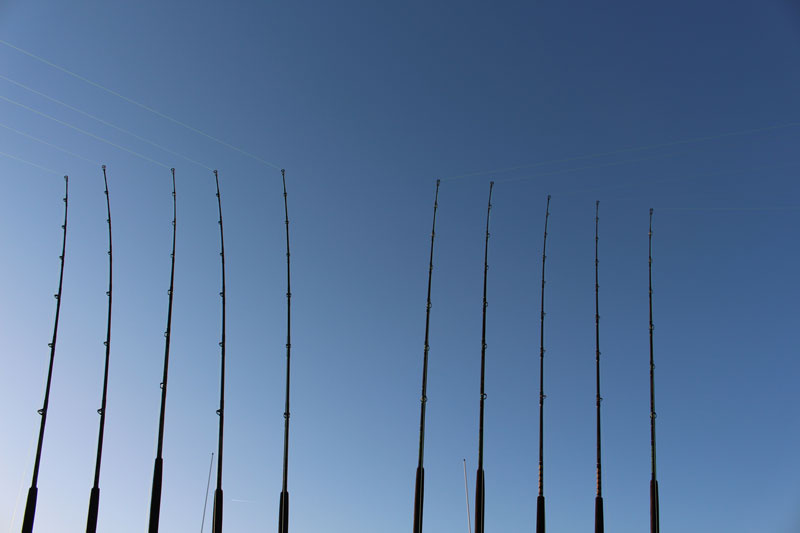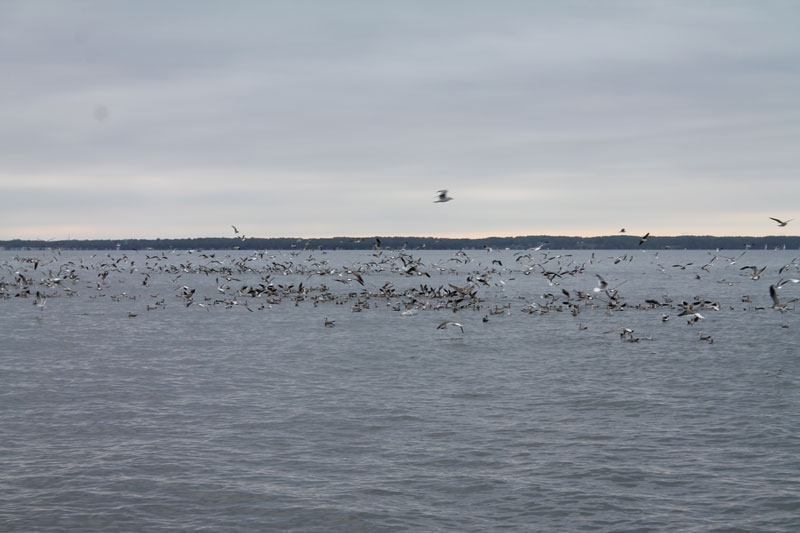If you've already read the other articles in our summer striper how-to series, Summer Chumming and How to Jig for Summer Stripers, you may be wondering about one other highly productive method: trolling. Trolling is, without any doubt, one of the most effective ways to target predator species – including schoolie summer stripers – especially when fish are scattered or are meandering around in small pods or schools. And while the basic premise seems quite simple, there’s a lot more to successful trolling than simply tossing out some lures and tugging them through the water.

Summer Striper Trolling Gear
The list of lures a rockfish will hit is long, but the list of bread-and-butter striper lures used for trolling in the late summer and into fall is relatively short. It starts with down-sized versions of the same tandem and umbrella rigs we tow during the spring months, but with six-inch shad instead of the larger versions. As usual white and chartreuse are the stock colors, with purple and dark colors reserved for low-light conditions. This is also a time of year when Spoonbrella rigs (umbrellas made with small spoons instead of plastic teasers) shine.
Now add surgical hoses into the mix, because there will be times that these lures save the day. They should be rigged with in-line weights of varying sizes, and before setting one over the side remember to put the hook through the eye, twist it into a figure-eight, and give a little tug. Then hold it over the side as the boat moves along and if it doesn’t swim enticingly, repeat the process with a slightly stronger tug. Interestingly, when it comes to hoses red is often the hot color. But keep a greenie or two on hand because sometimes, these do the trick.
Spoons are another lure you’ll want to keep in the spread, particularly in the late summer and early fall when there may be Spanish mackerel and/or bluefish around. Those macks aren’t likely to hit your other trolled baits, but both stripers and Spanish will go after a three- to five-inch Tony Acetta or Crippled Alwive. More importantly, metal spoons give you the ability to keep fishing without burning through lures, when lots of toothy blues are snapping the paddle-tails off all your shad. Note, however, that spoons are another lure that needs an in-line sinker. You’ll also want to put a ball-bearing swivel between the weight and the spoon to prevent line twist.

Rods and reels used for this tactic can run the gamut. We’ll point out that spring trophy rods and reels do out-gun school-sized fish a bit and you won’t exactly enjoy a sporting fight, but truth be told, many anglers will pull a summer spread with the exact same gear. Still, if you have the budget and the inclination, 20-pound gear is plenty to do the trick (though you may want to use heavier stuff for the umbrellas, as even small ones create quite a bit of drag) and you’ll get to feel a bit more fight from the fish.
Red Alert: That gives you an excuse to go out and buy a whole new set of gear – don’t waste the opportunity!
Summer Striper Trolling Tactics
As summer melts into early fall most trolling will take place out in the main-stem Bay. This will change later in the fall as young-of-year peanut bunker begin leaving coves and creeks, attracting the rockfish into river mouths, but for now open water is usually going to be the best bet. Most trollers start by working the channel edges and shelves where depths of 20-plus feet drop off into deeper water.
Rule number one: keep a pair of binoculars handy, and scan the water often. At this time of year you’ll often see birds working, your tip-off to set a new course. But remember to troll around the periphery of working birds, not right down the middle of them – there’s less chance of spooking the school of fish this way.

Rule number two: when it comes to trolling speed, forget about picking a number and sticking to it. No one speed is “best,” and the most effective speed can change with the tides and currents, course changes, and even the time of day. You’ll find it much more effective to set a speed, hold a lure over the side of the boat, and watch it work. Then make micro-adjustments speeding up and slowing down as necessary to get the best action out of the lure. Major course or tide changes, or long periods of time, require re-sets. And if you’re not catching, try bumping it up or easing it back a notch.
Trolling with Planer Boards
We love to hate planer boards as much as anyone else, but truth be told, if you want to be as effective an angler as possible you’ll haul them along on summer and fall trips, as well as on those in trophy trips. They allow you to boost the size of your spread dramatically, and for whatever reason, there are times when they out-fish boat rods hands-down. To learn more about this topic, check out How to Troll With Planer Boards.
So: are you ready to toss out those lures and start troll, troll, trolling along? Use these tips and tactics, and your summer should include plenty of schoolie stripers on ice.
Summertime Trolling Tips
- When the bite is tough consider dropping down to four-inch baits. Sometimes the fish are focused on small baitfish, and don’t want to chase down larger offerings.
- When stripers are concentrated on specific structure, troll with boat rods only and leave the planer boards out of the mix. This will allow you to quickly and tightly turn and stick close to the structure.
- Stagger weighted lures with leads ranging from four to 28 ounces, to cover the entire water column.
- Pull and check all lines at least once an hour, to make sure they aren’t fouled with weeds or other trash.
- When lots of blues are around, swap other soft plastics for ZMans – they’re tooth-proof.